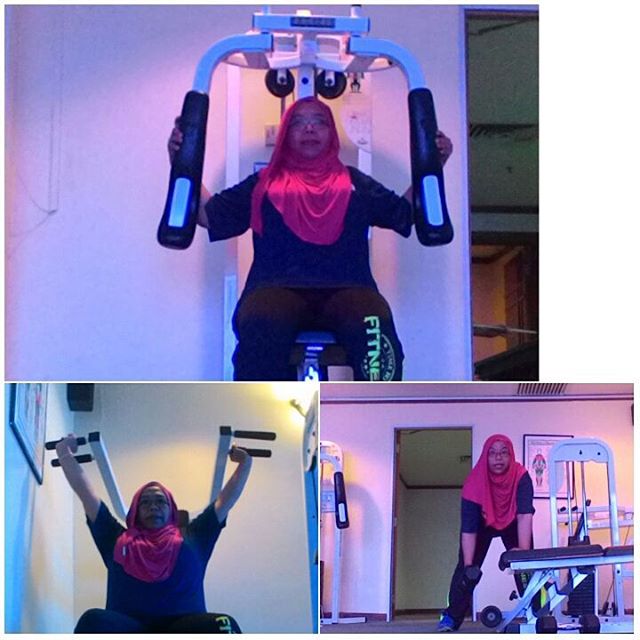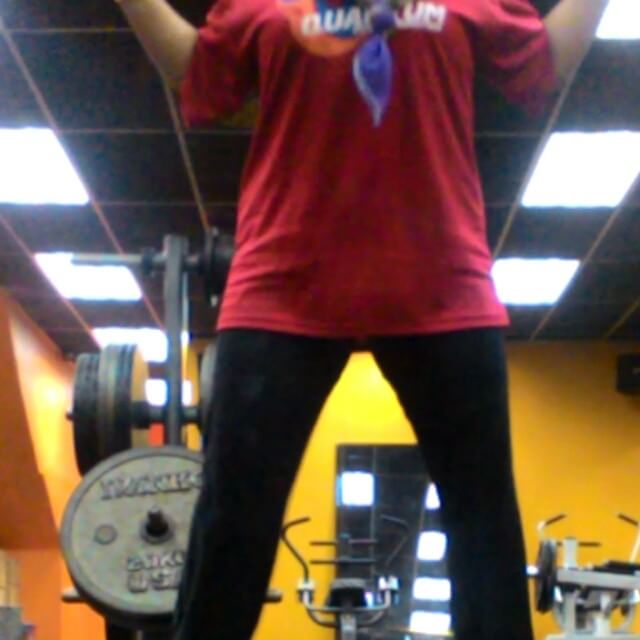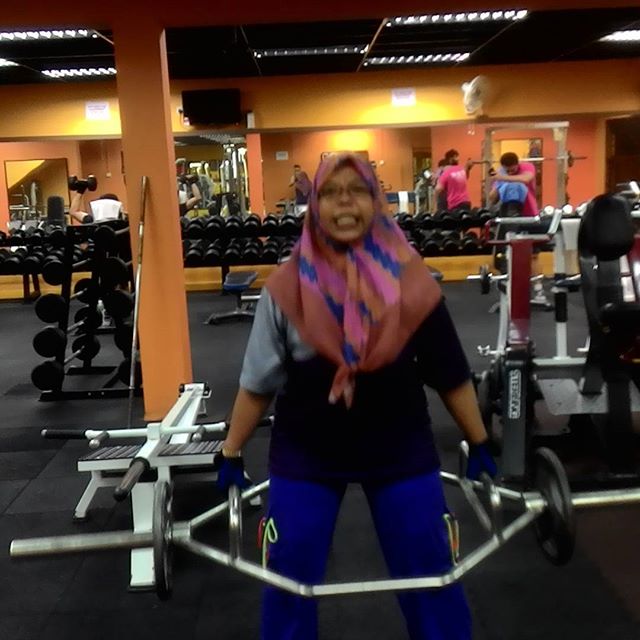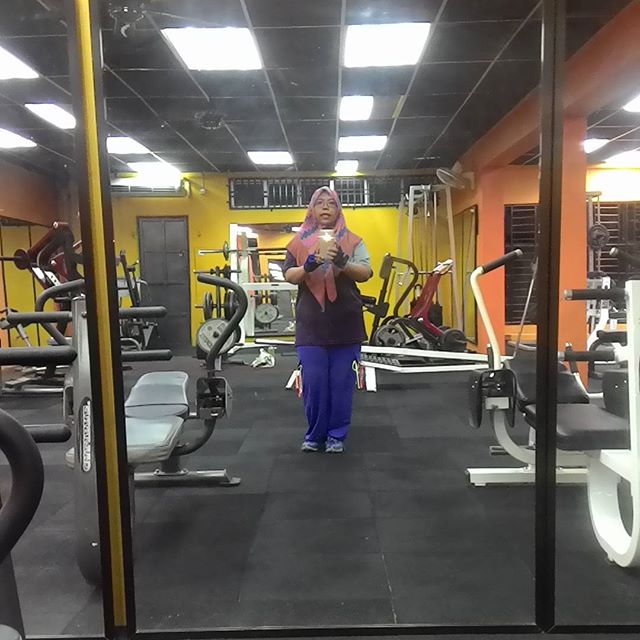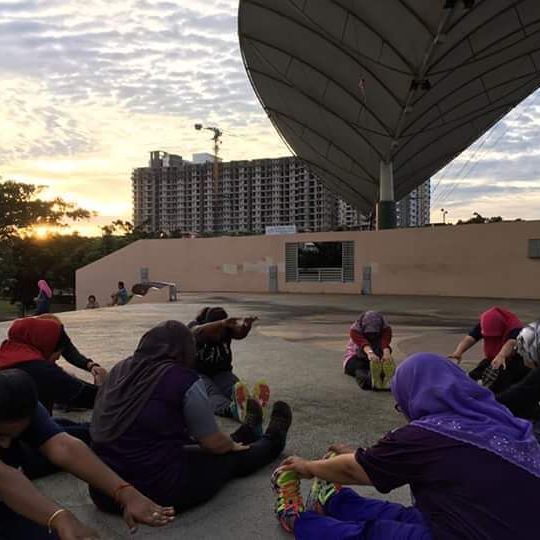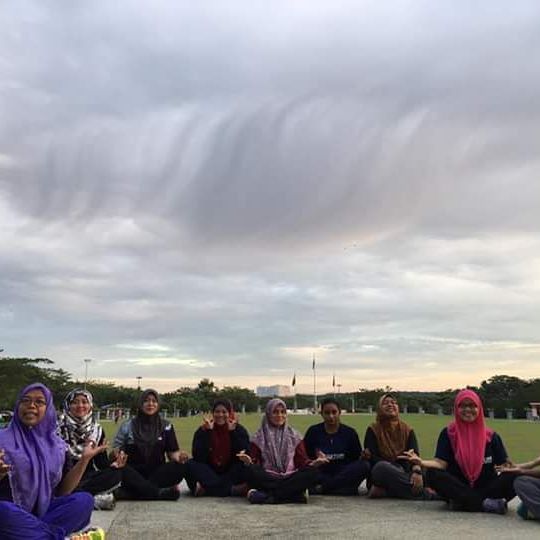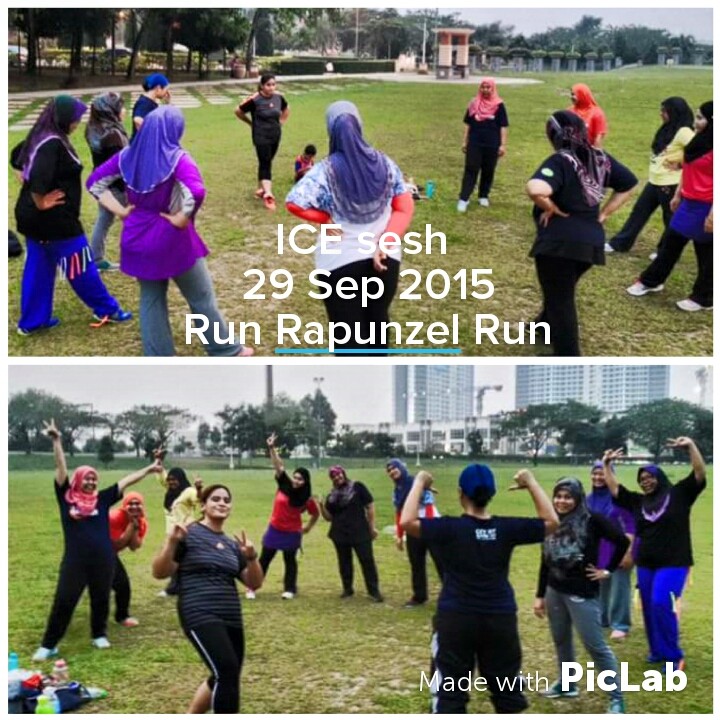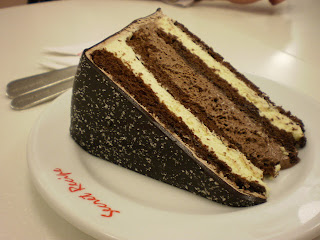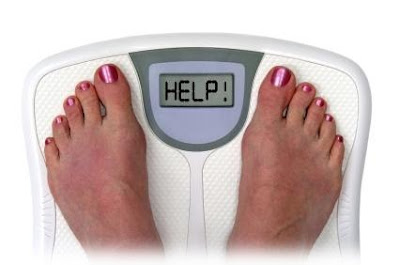Weight Lifters are sexy
Cardio my favourite kind of exercise
Run Run Run
Breakfast Like a King
You have a choice to choose any of these for your breakfast.
Nasi Lemak = 644 calories equivalent to 3 bowls of rice
Fried Chicken = 290 calories
Teh Tarik = 83 calories
3/4 cup oats, with cranberry or almond = 254 calories
Roti Canai with Dhal = 359 calories
Roti Telur with Dhal = 414 calories
2 pcs Curry Puff = 256 calories
Chapati with Green Gravy = 166 calories
2 half boil egg with plain bread = 227 calories
Plain Sardine Sandwiches = 71 calories
Noodles and such….
Do you have cravings for noodles? Think before indulging. Look at the calorie content and decide if the mee goreng mamak is the best for you!
Prawn Mee Soup : 293 calories
Mee Rebus : 556 calories
Mee Hailam : 277 calories
Wantan Mee Soup : 217 calories
Fried Meehoon/ Noodle : 510 calories
Wantan Mee Dry : 409 calories
Penang Laksa : 436 calories
Noodle Soup : 381 calories
Let’s head to the Fast Food Restaurants
Okay, here is a list of calorie contents in fast foods.
1 whole Beef Burger = 317 calories
1 whole Cheese Burger = 341 calories
1 whole cheese burger with extra cheese = 438 calories
1 whole Hot Dog = 225 calories
1 cup Sundae Chocolate = 380 calories
Apple Pie = 260 calories
1 slice Pizza, pepperoni, beef etc = 155 calories
1 slice Pizza Beef chicken, onion = 242 calories
1 piece Fried Chicken (various portion) = 290 calories
1 piece Chicken Wing = 166 calories
1 piece Chicken Thigh = 320 calories
1 cup Mashed Potatoes = 87 calories
1 cup Coleslaw = 62 calories
1 cup French Fries = 290 calories
1 can Soft Drink = 120
Of fish and meat dishes
Here is a list of the calorie content in these dishes.
1 pc fried Ikan Kembung : 219 calories
1 pc steamed Pomfret : 65 calories
1 small plate Fish Head Curry : 288 calories
1 small plate Deep Fried Baby Sotong : 630 calories
1 small plate Prawn Sambal : 194 calories
10 sticks Chicken Satay : 365 calories
1/2 cup Satay Sauce : 129 calories
2 small pieces Beef Rendang : 228 calories
2 small pieces Mutton Curry : 287 calories
1 pc Chicken Curry : 195 calories
The Ultimate Healthy Eating
Eating is my favourite activity. Well, I have to watch what I eat these days. Today, I am sharing the calories in our traditional Malay ‘kuihs’.
1 pc Cucur Udang : 144 calories
1 pc Apam Balik : 282 calories
1 pc Cake, plain : 100 calories
1 pc Kuih Koci : 183 calories
1 pc Goreng Pisang : 129 calories
1 pc Kuih Talam : 183 calories
1 pc Fried Spring Roll : 91 calories
Well, what do you think? Do you want a second serving?
Survival of the fittest

Last night we did the Zumba, a Latin-inspired calorie burning fitness program. Whoahh yeah it was fun and I sweat profusely with every beat of the move I made. It was a great exercise but the after effects~muscle strain all over my body.
I screwed up
Do I have the strength???
I am planning to start on a diet program and was looking for a program that I can follow. A friend of mine, Fid introduced me to Dukan Diet, not that she’s a believer of the diet program. So I googled and tried to get some first hand information about Dukan Diet.
Source of article: http://mydukandiet.com/dieting/attack-phase.html
The Attack Phase for me will last for 7 days. “The main purpose of this stage is to introduce good eating habits, while dealing with the usual diet hunger issues. For most people this is also the phase with the biggest weight loss – as the time goes by your body will adjust to the new regime and lose weight at a more stable pace. Be sure to eat at least 3 meals a day, with good portion sizes and never go hungry. The first days are also when you will meet the potential side effects of the diet. As pure protein products are low in fibre there is a risk of experiencing constipation. To help alleviate this problem eat oat bran or you could even add some wheat bran for extra effect and drink plenty of water.
One important habit that you need to establish from day one is proper water intake. Avoiding dehydration and overworking your kidneys is crucial on a high protein diet like this. Be sure to drink over 1.5 litres per day.
Oat bran is a very important ingredient of the Dukan Diet and introduced as soon as the Attack Phase. You should incorporate 1.5 tablespoons of oat bran per day in any form you like – as porridge, with yoghurt, in muffins or pancakes.
One food unrelated rule is to introduce exercise in the form of a 20 minute walk each day. Many dieters will be happy to hear that at the same time more extensive exercise is discouraged in this phase.”
Allowed Foods
Lean beef
Chicken (except skin and outside part of the wings)
Chicken liver
Any fish (except canned in oil or sauce)
Shellfish
Eggs (up to two per day, unlimited egg whites but watch the yolks if you have high cholesterol)
Dairy products (low fat, below 2% fat)
Sweeteners (except fructose based), vinegar, mustard, spices, herbs, garlic, onion (as spice), lemon juice (only as spice, not for drinking), sugar free natural ketchup (in moderation), sugar free chewing gum
Understanding Weight Loss
http://www.aswellas.co.nz/our-services/shake-it-professional-weight-management-programe/ and
http://www.healthyweightforum.org/eng/articles/glycemic-index/
No part of the notes have been changed. I copied the articles to understand what GI is all about and disseminate this information to friends and relatives. Your body has three main sources of energy. It can burn fat, glucose (carbohydrate), or protein. When we burn fat, we produce substances called ketones. These are produced normally, and when we measure these ketones in our urine, we know we are burning fat efficiently.
High levels of dietary carbohydrates, also known as high glycaemic load foods (e.g. sugars and starchy foods such as bread, rice, pasta and potatoes), work with the hormone insulin to ‘switch off’ fat burning and increase fat gain.
It becomes virtually impossible to lose fat if you have raised insulin levels.
When your body’s blood sugar and insulin levels are low enough you will switch to a higher level of fat burning.
To burn fat you need to restrict high glycaemic load foods to a level where your body will produce less of the hormone insulin thereby increase the rate of fat burning. Eating less food is not the answer; you need to specifically reduce the high glycaemic index, carbohydrate-rich foods in order to ‘switch on’ fat burning.
The Glycemic Index
About the Glycemic Index
The Glycemic Index (GI) relates to the way your body’s sugar levels respond to certain foods. Foods are given a rating from 0 –100 on the glycemic index with glucose in the highest position. High Glycemic Index foods (such as simple carbohydrates) will increase the body’s sugar levels rapidly whereas low glycemic index foods will increase the body’s sugar levels slowly. A good understanding of the glycemic index can assist in weight loss and help control diabetes.
How Does the Glycemic Index work?
The glycemic index is complicated and cannot be generalised to all people. Different people will have different reactions to food. The body’s response to food will relate to several factors including; age, activity level, insulin levels, time of day, amount of fibre and fat in the food, how refined (processed) the food is, and what was eaten with the food. In addition to this, other factors such as the ratio of carbohydrates to fat and protein as well as how the food was cooked (eg. Boiled compared to fried or baked) and metabolism will determine the way your body’s sugar level responds after eating. Foods that have a low glycemic index will have little effect on the body’s sugar levels. Comparatively, foods that have a high glycemic index will have an instant affect on blood sugar levels. Ratings on the glycemic index have resulted from numerous studies; however, individuals should test their own reactions to food in relation to the glycemic index.
The Glycemic Index and Food
Foods low on the glycemic index will release glucose gradually into the blood stream whereas foods high on the glycemic index will provoke an immediate response in the blood sugar levels. Foods that contain carbohydrates are usually high on the glycemic index and have the greatest effect on blood sugars. Pasta dishes, bread and potatoes are usually high on the glycemic index. The composition in the carbohydrate will also affect how the body’s sugar levels react. For example, white bread will rate high on the glycemic index whereas wholegrain or rye bread will be rate lower on the glycemic index as it contains more grains and contains complex carbohydrates. Examples of low glycemic foods are breakfast cereals (which are based on wheat bran, barley and oats), wholegrain break, fruit, lentils, soybeans, baked beans etc. Examples of high glycemic foods are white bread, soft drinks, full fat ice-cream, chocolate bars etc.
The Glycemic Index and Dieting
Health experts and dieticians contest that the glycemic index is difficult to use because it is complicated and will vary from person to person. They do concede however, that the glycemic index is a useful meal-planning tool especially when individuals monitor their own individual responses to foods. Low glycemic food is especially helpful in assisting those who want to lose weight. Low glycemic index foods will increase the sugar levels in the body to sustain energy levels for longer periods of time. This means an individual will feel less inclined to eat because energy is being slowly released into their bloodstream. A good understanding of the glycemic index will also assist with exercise. If you exercise then eating high glycemic foods will help you recover from your workout. Specifically, faster carbohydrates that are high on the glycemic index are great for raising low blood sugars after intense exercising whereas low glycemic index foods are helpful in maintaining blood sugar levels for long periods of exercise. Health experts encourage using the glycemic index in conjunction with other meal programs to assist in managing diabetes and/or controlling weight.
Below is a glycemic index foods list. The glycemic index foods list shows the food category and also the glycemic index for each particluar food in that category.
White bread 70
Wholemeal bread 69
Pumpernickel 41
Dark rye 76
Sourdough 57
Heavy mixed grain 30-45
Lentils 28
Soybeans 18
Baked beans (canned) 48
Cornflakes 84
Rice Bubbles 82
Cheerios 83
Puffed Wheat 80
All Bran 42
Porridge 46
Mars Bars 65
Jelly beans 80
Chocolate bar 49
Apple 38
Orange 44
Peach 42
Banana 55
Watermelon 72
Milk, full fat 27
Milk, skim 32
Icecream, full fat 61
Yogurt, low fat, fruit 33
Fanta 68
Gatorade 78
A month has gone
It has been almost a month since I’ve started on my weight loss challenge. Apa tak nya, 3 tahun dok di NZ, I’ve gained almost 15kg…hahaha that happened when you do lots of cooking & baking and adding yummilicious cheese in my cooking…
It has been almost a month that I ate rice. Let’ see…I stopped eating rice & other ordinary food since 26th Oct…
Well, let me say…the last time I had rice was Aidil Adha morning…17th Nov..i had no choice actually, I prepared Beriani & all the dishes that complement my beriani…so, tak kan tak makan kot?? ada la jamah satu senduk…and that’s it…
I havent seen any improvements yet…but I felt a little healthier, and my joints did not ache as much….i’ve got more months to go & I just wish I can hold on to sustain my appetite….
The end of it…
I guess I am just no good at making attempts to lose weight as I have stopped starving. I stopped taking diet products. Poor me!!
